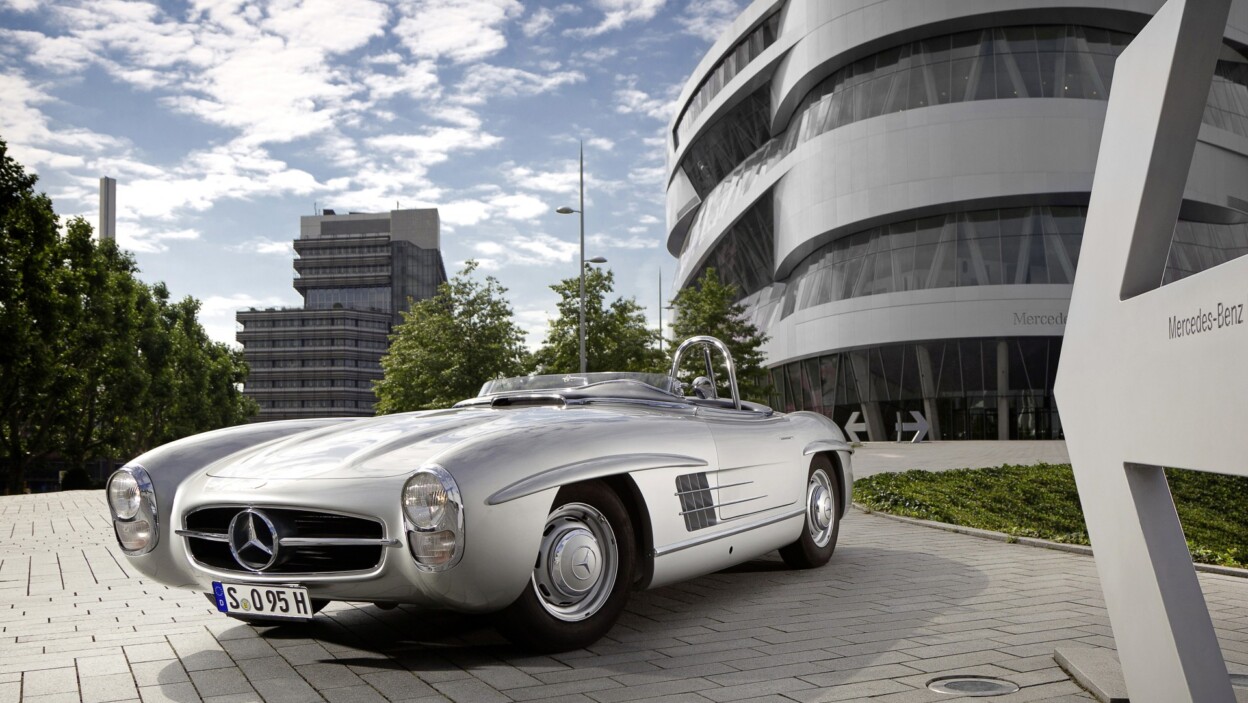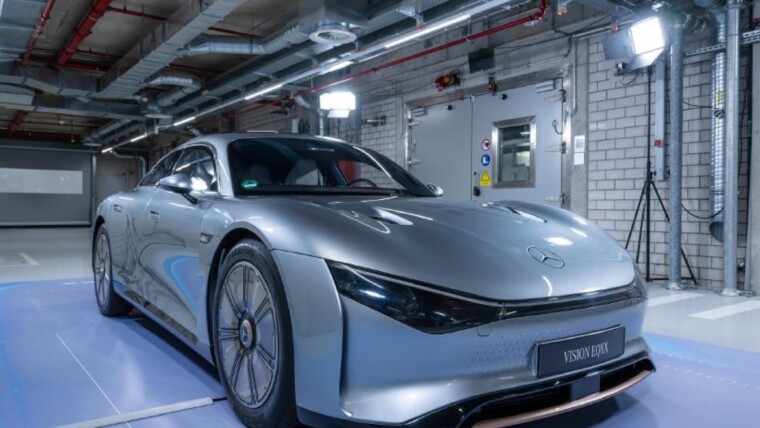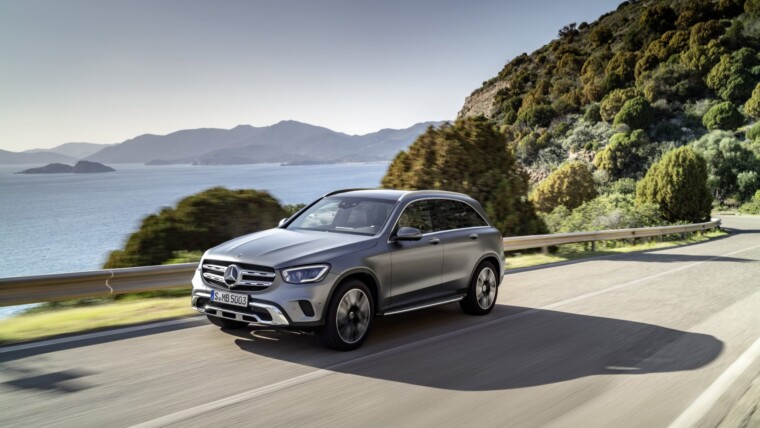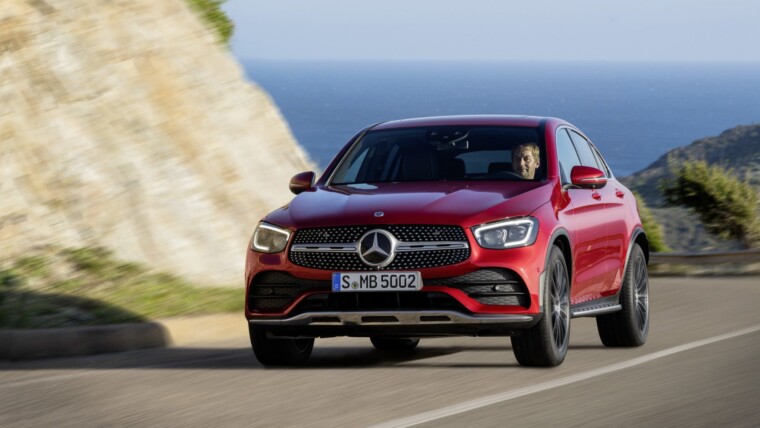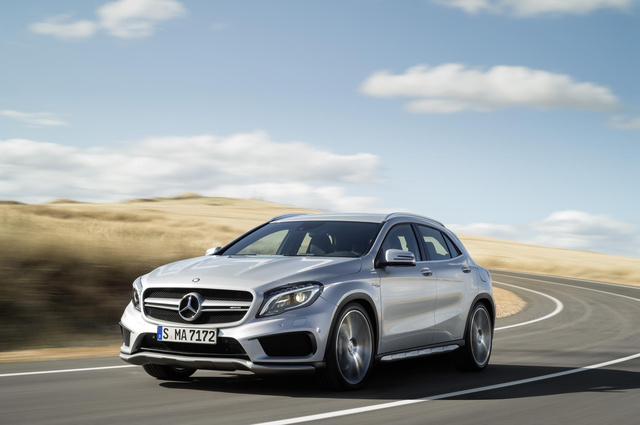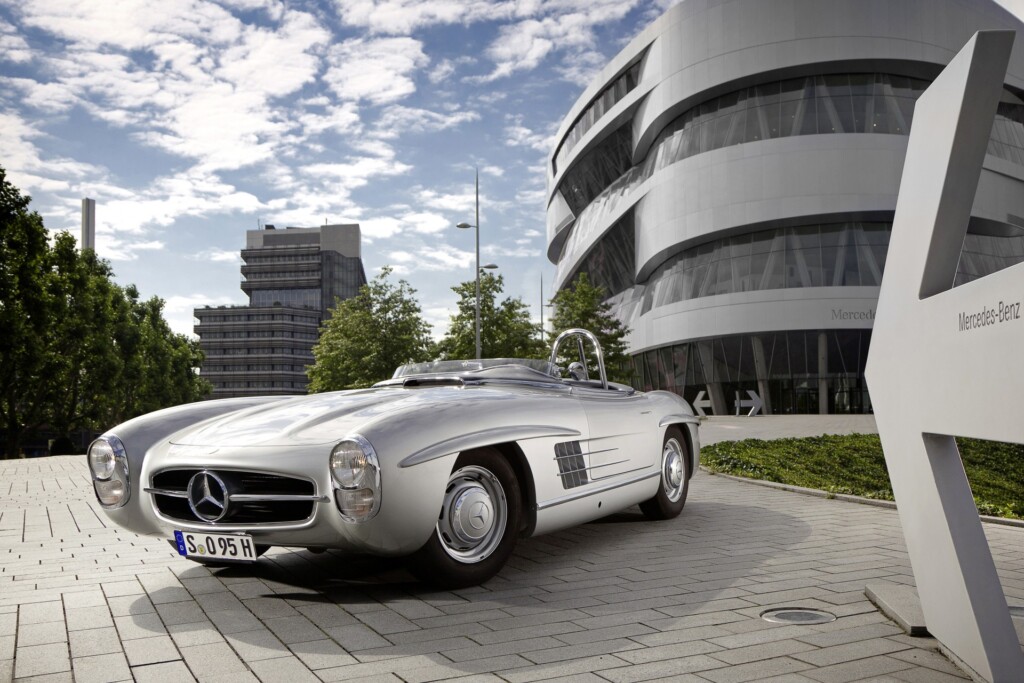
At this year’s Goodwood Festival of Speed, Mercedes-Benz Classic will showcase more than 100 years of motorsport from the Mercedes racing car built in 1906 to the SLS AMG GT3 built in 2011.
The Mercedes-Benz 540 K Streamliner of 1938 will be part of the line-up at Goodwood. Thanks to an outstanding Cd value of 0.36, it can reach a cruising speed of up to 170 km/h and – boosted by its supercharger – a top speed of 185 km/h. Dating back to the same era are two record-breaking cars based on the W 25 and W 125 “Silver Arrows”, which Mercedes-Benz will be displaying at Goodwood. The W 125 record-breaking car was the one in which Rudolf Caracciola set the absolute speed record on a public road of 432.7 km/h in 1938, a record that still stands to this day.
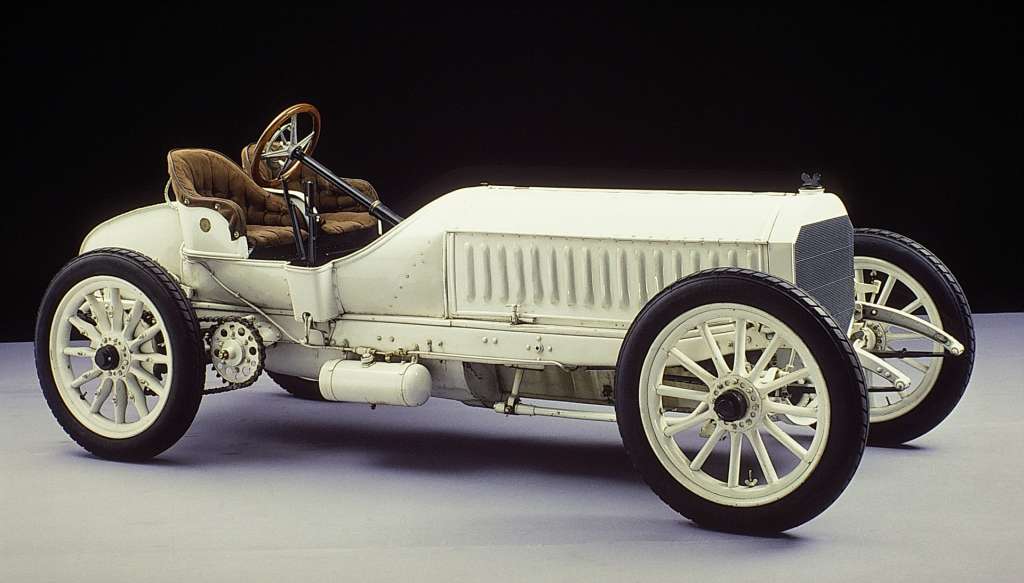
The full spectrum of Mercedes-Benz’s sporting success since the second half of the 20th century is evidenced by further vehicles in the high-class line-up at the Festival of Speed: the Mercedes-Benz 300 SLS of 1957 is the car in which Paul O’Shea won the American Sports Car Championship. The intervening years up to the present day are represented by a 280 E rally vehicle (W 123) from 1977, a Sauber-Mercedes C 9 Group C racing car from 1988, a Mercedes-Benz 1834 S racing truck of 1996 and a Mercedes-Benz SLS AMG GT3 customer sports racing car.
O’Shea’s 300 SLS was derived at the time from the 300 SL Roadster (W 198 II). A similar 300 SL Roadster that is currently on the books of the ALL TIME STARS (ATS) at Mercedes-Benz Classic is also putting in a guest appearance at Goodwood. This particular example, built in 1960, has been restored by Mercedes-Benz Classic with meticulous attention to the original detail and authenticity. A second outstanding ATS vehicle is the AMG Mercedes C-Class racing tourer in which Bernd Schneider became runner-up in the International Touring Car Championship of 1996. Both vehicles are being displayed on the Mercedes-Benz UK stand at Goodwood and are for sale.
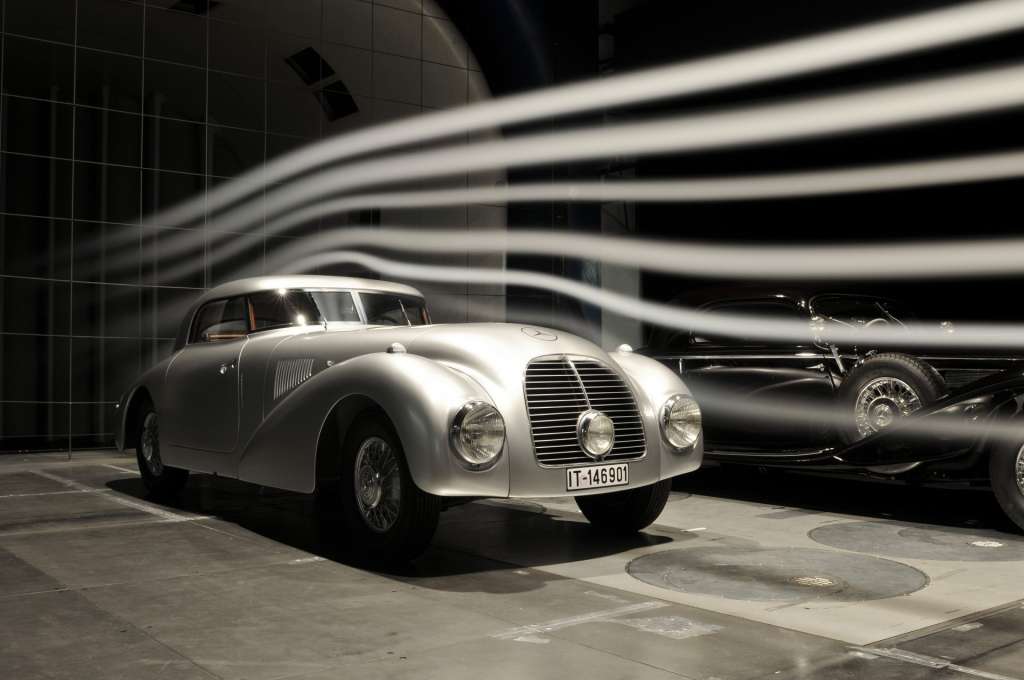
The 21st Festival of Speed takes place from 23 to 26 June 2016 in the grounds of Goodwood House. The theme for this year is “Full Throttle – The Endless Pursuit of Power”. The Festival is one of the most important events in the international classic motoring calendar where the organisers, are expecting more than 150,000 visitors from all over the world.
The Mercedes-Benz Classic cars at the 2016 Goodwood Festival of Speed
- Mercedes 120 hp six-cylinder racing car, 1906
This first Mercedes racing car was developed by Wilhelm Maybach for the 1906 season. The extremely innovative six-cylinder in-line engine features individual steel cylinders mounted onto the light-alloy crankcase, an overhead camshaft, overhead valves and a double high-voltage spark-plug ignition system. The design served as a model for top-performance engines for decades to come. The engine is not the only notable feature of the six-cylinder model. The longitudinal members of the frame are elbowed over the front axle, the leaf springs mounted in a flatter position and the radiator set lower, making this innovative Grand Prix vehicle appear extraordinarily low. It was, however, never used for racing, since the overhead camshaft and the allegedly “newfangled” spark-plug ignition failed to meet with the approval of the management and supervisory boards of DMG (Daimler-Motoren-Gesellschaft). Maybach, celebrated by the motoring media as the “king among designers”, left the company in 1907. As a consequence, the company continued to use four-cylinder engines in the ensuing years.
Technical data
Year of construction: 1906
Cylinders: 6/in-line
Displacement: 11,084 cc
Output: 120 hp
at: 1500 rpm
Top speed: 150 km/h
2. Mercedes-Benz W 25 12-cylinder record-breaking car, 1936
In the year of the Olympics, 1936, the autobahn between Frankfurt and Darmstadt, these days the A 5, became the setting for a series of record-breaking drives between Hans Stuck, in an Auto Union car, and Rudolf Caracciola for Mercedes-Benz. The cars’ aerodynamics played a particularly important role, since the wind resistance at the speed to which they aspired, 370 km/h, is some 14 times higher than at 100 km/h. Appearing for Mercedes-Benz was a special model based on the Grand Prix racing car of the time, the W 25. Making its debut at this point, the fully streamlined bodyshell, which also covered the wheels, had been optimised in the large wind tunnel of the Zeppelin works in Friedrichshafen. And successfully so: On 26 October 1936 Rudolf Caracciola set three international records, reaching a top speed of 372.1 km/h. Two weeks later he set a world record over ten miles, at a speed of 333.5 km/h. The contest entered its next phase in the autumn of 1937 with redesigned vehicles.
Technical data
Year of construction: 1936
Cylinders: V12
Displacement: 5577 cc
Output: 616 hp
at: 5800 rpm
Top speed: 372 km/h
3. Mercedes-Benz W 125 12-cylinder record-breaking car chassis, 1938
Following an unsatisfactory week for Mercedes-Benz in October 1937, the Mercedes-Benz record vehicle was fundamentally redesigned. The bodyshell had been further improved, to give it a sensational drag coefficient of just 0.17, made possible by cooling the engine with ice. In order to be able to manage without the conventional cooling air inlet and so to reduce wind resistance, a box filled with around 100 litres of ice and water was mounted in front of the radiator. This meant that the air inlet could be reduced to the size needed for the intake air. Two additional slide carburettors helped increase the output of the 5.6-litre 12-cylinder engine to 562 kW (765 hp). In January 1938 Rudolf Caracciola drove this completely redesigned record-breaking car at a speed of 432.7 km/h on the autobahn between Frankfurt and Darmstadt. This remains, to this day, the highest speed ever reached on a public road.
Technical data
Cylinders: V12
Displacement: 5577 cc
Output: 765 hp
at: 5800 rpm
Top speed: 437 km/h
4. Mercedes-Benz 540 K Streamliner, 1938
The Mercedes-Benz 540 K Streamliner marks the pinnacle of the aerodynamically optimised vehicles developed by Mercedes-Benz in the 1930s. Based on the Stuttgart-based brand’s top sports car model, this unique vehicle set benchmarks in both technical and aesthetic terms. Mercedes-Benz was thus at the forefront of a development that was preoccupying the whole of the motor industry at that period: the rapid pace of technical change and the growing network of fast roads enabled higher potential cruising speeds and, particularly from the aspect of efficiency, aerodynamics were becoming increasingly important. With the flowing lines and low silhouette of the aluminium body, minimal sources of disturbance on the surface and underbody cladding, the design of the Streamliner interpreted the findings from the company’s research in an exemplary way to give it a sensationally low drag coefficient (Cd value) of just 0.36 and a top speed of 185 km/h. Following meticulous restoration, Mercedes-Benz presented the vehicle to the general public once again in 2014.
Technical data
Cylinders: 8/in-line
Displacement: 5401 cc
Output: 180 hp
Top speed: 185 km/h
5. Mercedes-Benz 300 SLS, 1957
Two examples of the Mercedes-Benz 300 SLS, a special version of the 300 SL Roadster, were built for the American sports car championship in 1957 due to the fact that the production version of the brand-new model was not yet allowed to enter the 1957 season in the “Standard production” category. In order to maximise its chances in the only remaining alternative motor racing category, D, every trick in the book was applied to slim down a standard Roadster to an SLS weighing just 970 kilograms. In a parallel process, the engine output was increased to 174 kW (237 hp). It was in the SLS that Paul O’Shea won the Category D of the American sports car championship, by a significant margin over the competition – he had already previously taken the title in 1955 and 1956 in the 300 SL “Gullwing”. Following Mercedes-Benz’s withdrawal from motor racing in the US, both models of the 300 SLS were sold. The 300 SLS on display here was built in 1994 according to the original specifications on the basis of a 300 SL test car.
Technical data
Cylinders: 6/in-line
Displacement: 2996 cc
Output: 237 hp
at: 5900 rpm
Top speed: 250 km/h
6. Mercedes-Benz C 280 E rally car, 1977
Following a long break from the sport, Mercedes-Benz returned to rallying in 1977, immediately taking first and second places in the London-Sydney Marathon. The rally, which took place that year for the second time since 1968, was over a distance of 34,000 kilometres and is considered the longest and toughest rally in the world. For six and a half weeks, the vehicles and drivers zigzagged across Europe, Asia and Australia. The vehicles used were near-standard 280 E models, equipped with rollover cages and with sturdy dust shields instead of the standard bumpers. The suspension was reinforced and 15-inch tyres fitted as a precaution against what were in some cases extremely poor roads. One of these rally cars was driven to victory by a team made up of Andrew Cowan/Colin Malkin/Mike Broad, closely followed by Anthony Fowkes and Peter O’Gorman. Two further cars finished in sixth and eighth places. This 280 E is the original vehicle in which Fowkes and O’G orman finished in second place.
Technical data
Cylinders: 6/in-line
Displacement: 2746 cc
Output: 205 hp
at: 6000 rpm
Top speed: 200 km/h
7. Sauber-Mercedes Group C racing sports car C 9, 1989
Mercedes-Benz partnered with the Sauber team to compete in the Group C World Sports Prototype Championship of 1988 with the C 9. The partners won five races and finished the season as runners-up. The following year, 1989, the C 9 started in the traditional Mercedes-Benz colour of silver and won eight races. One of the most spectacular wins was the double victory of Jochen Mass/Manuel Reuter/Stanley Dickens and Mauro Baldi/Kenny Acheson/Gianfranco Brancatelli in the “24 Hours of Le Mans” – 37 years after the outstanding success of the first post-war Silver Arrow, the Mercedes-Benz 300 SL racing sports car (W 194). In that same year the team also won the world championship title, while Jean-Louis Schlesser won the drivers’ championship. From 1987 until 1988, the team used the Mercedes-Benz M 117 V8 engine with 530 kW (720 hp); from the 1989 season the new four-valve M 119 unit came into service. Both engines are thoroughbred further developments of standard passenger car production engines of the type used in the S-Class and SL.
Technical data
Cylinders: V8
Displacement: 4973 cc
Output: 720 hp
at: 7000 rpm
Top speed: 400 km/h
8. Mercedes-Benz 1834 S racing truck, 1996
The Mercedes-Benz 1834 S racing truck succeeded the highly successful 1450 S as the second generation of racing truck to be developed by Mercedes-Benz. Its predecessor had won the championship title once with Thomas Hegmann at the wheel and three times with Steve Parrish. The 1834 S was designed for the Super-Race Truck category that had been newly defined in 1994, and classified as a pure racing vehicle with the appearance of a truck. Mercedes-Benz went on to dominate the new category as well with the 1834 S, winning the European Championship three times in a row from 1994 to 1996, twice with Steve Parrish once again at the wheel, once with Slim Borgudd. The 1834 S features a reinforced frame plus water-cooled disc brakes front and rear. Its powerful V6 engine is fitted with EDC Electronic Diesel Control (EDC) as a means of limiting its top speed, as required by the regulations, to 160 km/h. The vehicle shown was driven by Heinz Dehnhardt in the 1996 season.
Technical data
Cylinders: V6
Displacement: 11,946 cc
Output: 1000 hp
at: 2000-2200 rpm
Top speed: 160 km/h (governed)
9. Mercedes-Benz SLS AMG GT3, 2012
The Mercedes-Benz SLS AMG GT3 was launched in the autumn of 2010 as an exclusive customer-sports vehicle for sprint and endurance races. The racer was designed to comply with the GT3 specifications of the FIA (Fedération Internationale de l’Automobile) that stipulate, amongst other things, a near-series engine. The GT3’s 6.2-litre V8 engine therefore corresponds almost exactly to that of the series-production vehicle launched in 2009. Having said that, the lower weight of the racing car nevertheless means that it further undercuts the already outstanding acceleration figures of the standard vehicle. The SLS AMG GT3 is fitted with a six-speed racing transmission with sequential gearshift, controlled by the driver via two shift paddles on the steering wheel. The Mercedes-Benz SLS AMG GT3 has competed successfully in numerous races since the 2010 season. In the 2013 season alone, the SLS AMG GT3 took 38 victories and won four championships. The vehicle taking part at the Festival of Speed is the one in which the Black Falcon Team won the Dubai 24 Hour Race in 2012.
Technical data
Cylinders: V8
Displacement: 6208 cc
Output: 571 hp
at: 6800 rpm
Top speed: over 300 km/h
Other posts by AF Newsdesk

